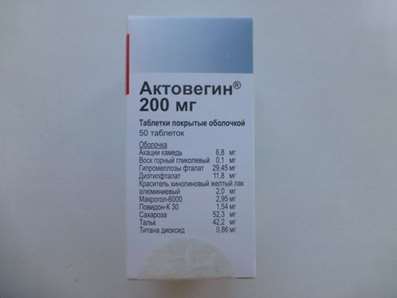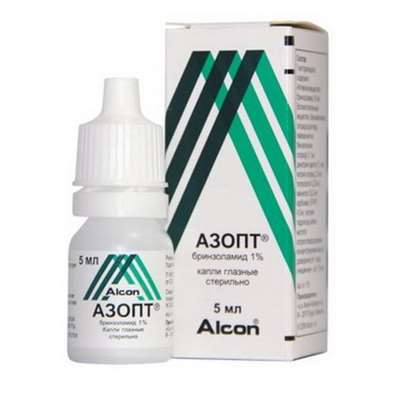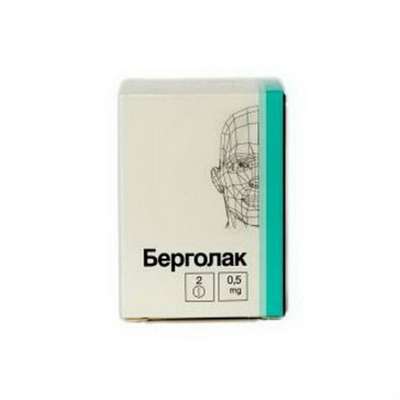Instruction for use: Mycophenolic acid
I want this, give me price
Trade name of the drug Ė Myfortic, Mycophenolate sodium, Mycophenolate sodium
The Latin name of the substance Mycophenolic acid
Acidum mycophenolicum (genus. Acidi mycophenolici)
Chemical name
(4E) -6- (4-Hydroxy-6-methoxy-7-methyl-3-oxo-1,3-dihydro-2-benzofuran-5-yl) -4-methylhex-4-enoic acid
Gross formula
C17H20O6
CAS code
C17H20O6
Pregnancy and breast-feeding
The action category for fetus by FDA is D.
Model clinical-pharmacological article 1
Pharmacotherapy. Immunodepressant is a selective and reversible inhibitor of inosine monophosphate dehydrogenase (a key enzyme of purine synthesis), inhibits the synthesis of guanosine nucleotides. It suppresses the proliferation of T and B lymphocytes (to a much greater extent than other cells), since the proliferation of lymphocytes depends mainly on the synthesis of purines de novo. The mechanism of action of the drug complements the mechanism of action of inhibitors of calcineurin (including cyclosporine), which disrupt the production of cytokines and affect T-lymphocytes in the phase of resting the cell cycle.
Pharmacokinetics. Intensively absorbed after oral administration. Absorption - 93%, bioavailability - 72%. T—max - 1,5-2 hours. In the dose range from 180 to 2160 mg, pharmacokinetics have a linear dose-dependent character. The fasting AUC value does not differ from that when taken with a high-fat diet (55 g fat, 1000 cal), while Cmax decreases by 33%. The volume of distribution of the IFC is 50 liters. The connection with the proteins of mycophenolic acid and GMPA is 97% and 82%, respectively. With a decrease in the number of binding sites with proteins (with uremia, hepatic insufficiency, hypoalbuminemia, concurrent use of drugs with high binding to plasma proteins), an increase in the concentration of free mycophenolic acid in plasma is possible. Metabolized with the participation of glucuronyltransferase with the formation of the main pharmacologically inactive metabolite - phenolic glucuronide of mycophenolic acid (GMPA). About 28% of the oral dose is metabolized in HMFC when "first passed" through the liver by presystemic metabolism. T1 / 2 - 11,7 h, ground clearance - 8,6 l / h. Mycophenolic acid is excreted mainly with urine in the form of HMFC, and less than 1% in unchanged form. T1 / 2 HMFC - 15.7 h, ground clearance - 0.45 l / h. GMPK is also secreted with bile into the intestine, where it is cleaved (by deconjugation) by the intestinal flora. The resulting mycophenolic acid can then be reabsorbed. After 6-8 hours after taking the drug, a second peak of mycophenolic acid concentration is observed, which corresponds to the repeated absorption of deconjugated mycophenolic acid. AUC of HMFC with renal failure increases; In patients with anuria, the AUC of GMPA is about 8 times higher. Hemodialysis does not affect the clearance of mycophenolic acid and HMFC. In renal failure, the concentration of free mycophenolic acid can significantly increase (probably due to a decrease in binding to proteins under conditions of high urea concentration in the blood). There was no effect of hepatic insufficiency on the glucuronation reaction of mycophenolic acid. The effect of liver disease on the pharmacokinetics of mycophenolic acid can depend on the nature of the disease (primary lesion of the parenchyma, or bile duct system). Cmax and AUC of mycophenolic acid in children are more variable. When used in children in a single dose of 450 mg / m 2, AUC is higher than that in adults with a usual single dose of 720 mg. Clearance - 7.7 l / h / m.
Indication. Prevention of acute graft rejection in patients with allogeneic kidney transplants receiving basic immunosuppressive therapy with cyclosporin (in the form of a microemulsion) and SCS.
Contraindications. Hypersensitivity, lactation.
Carefully. Congenital insufficiency of hypoxanthine-guanine phosphoribosyltransferase (including Lesha-Naikhan syndrome and Kelly-Sigmiller syndrome). Diseases of the gastrointestinal tract in the phase of exacerbation, children's age (efficacy and safety has not been studied), pregnancy.
Dosing. Inside, the tablets are swallowed whole (do not chew or break the tablets) on an empty stomach or together with food.
The drug therapy in patients who did not receive it before, begin in the first 24 hours after transplantation. The recommended dose is 720 mg twice a day (daily dose of 1440 mg). With the replacement of mycophenolate mofetil in patients taking it at a dose of 2 g / day for mycophenolic acid, its dose should remain 720 mg twice a day.
Correction of the dosing regimen in elderly patients, with liver failure, as well as in patients with delayed recovery of kidney graft function is not required.
Reaction rejection of the graft does not lead to a change in the pharmacokinetics of the drug. In these cases, changes in the dosing regimen are not required.
Side effect. As a part of combined immunosuppressive therapy (cyclosporine, GCS) very often (more than 10%): leukopenia and diarrhea. Lymphoproliferative diseases or lymphomas (0.3%) during 1 year of therapy. Non-malignant skin carcinomas (0.8%). Infectious diseases (opportunistic infections): most often - CMV infection (in 21.6% of patients with newly transplanted kidney and in 1.9% of patients with stable graft on long-term maintenance therapy), candidiasis, infections caused by the herpes simplex virus.
1-10% and more than 10%: often - urinary tract infections; Herpes zoster, candidiasis of the oral mucosa, sinusitis, upper respiratory tract infections, gastroenteritis, infections caused by the herpes simplex virus, nasopharyngitis.
From the hematopoiesis: very often - leukopenia; Often anemia, thrombocytopenia.
From the nervous system: often - a headache.
From the respiratory system: often - cough.
From the digestive system: very often - diarrhea; Often - nausea, vomiting, gastritis, constipation, abdominal pain, flatulence, tenderness of the abdomen during palpation.
Laboratory indicators: often - increased activity of liver enzymes, hypercreatininaemia.
Other: often: hyperthermia, fatigue.
The following side effects were observed against the background of taking medications containing as my active substance mycophenolic acid ("class-effects"):
From the gastrointestinal tract: colitis, esophagitis (including CMV-colitis and CMV-esophagitis); CMV gastritis, pancreatitis, perforation of the intestinal wall, gastrointestinal bleeding, stomach and / or duodenal ulcer, intestinal obstruction.
Phenomena associated with immunosuppression: infectious diseases of severe course, sometimes life-threatening, incl. Meningitis, infective endocarditis, tuberculosis; Atypical infections caused by mycobacteria.
From the hemopoietic system: neutropenia, pancytopenia.
Interaction. With CRF, blood concentrations of both HMFC and acyclovir may increase (a similar pathway is the channeling secretion). Such patients require careful observation.
The addition of ganciclovir does not affect the pharmacokinetics of mycophenolic acid and HMFC. When the therapeutic concentration of mycophenolic acid is reached, the clearance of ganciclovir does not change. However, when combined with ganciclovir, patients with CRF may need to adjust the dosage regimen of ganciclovir, and such patients should be carefully monitored.
Antacid preparations containing magnesium hydroxide and aluminum. With simultaneous administration with antacids containing Mg2 +, Al3 +, the absorption of mycophenolic acid is reduced, as a result of which the AUC decreases by 37% and Cmax by 25%.
Do not prescribe azathioprine simultaneously.
Against the background of equilibrium concentrations of mycophenolic acid, the pharmacokinetics of cyclosporin A do not change.
In connection with its ability to bind bile acids in the intestine colestramine, etc. drugs affecting the circulation of bile acids, can reduce the concentration and AUC of mycophenolic acid.
Influence of oral contraceptives on the pharmacokinetics of Myfortic is unlikely, but the effect of prolonged drug therapy on the pharmacokinetics of oral contraceptives has not yet been studied, it is impossible to exclude the probability of a decrease in the effectiveness of contraceptives.
Do not use live vaccines in patients with immunosuppression. With the use of other vaccines, the production of antibodies can be reduced.
Special instructions. Therapy should be carried out only by qualified transplant doctors.
In patients receiving combined immunosuppressive therapy, including t. And mycophenolic acid, increased risk of developing lymphomas and other malignant tumors, especially the skin. This risk is most likely associated with the intensity and duration of immunosuppressive therapy. To reduce exposure to sunlight and UV radiation (reducing the risk of skin cancer), it is recommended to protect the skin with clothing and use sunscreens with a high degree of protection.
Patients receiving therapy with the drug should immediately inform the doctor of all cases of infection, the appearance of hematomas, bleeding and any other manifestations of oppression of bone marrow function.
Excess immunosuppression increases the likelihood of developing infections, incl. Opportunistic and fatal infections, as well as sepsis.
In patients receiving therapy with the drug, the development of neutropenia, caused either by the action of the mycophenolic acid itself, or concomitant therapy with other drugs, viral infections or a combination of these factors, is not excluded. During the treatment period, the number of leukocytes and the blood formula should be regularly determined: during the first month of therapy - weekly, during the second and third months - 2 times a month, then, during the first year - once a month. When neutropenia develops (the absolute number of neutrophils is less than 1500 / μl), therapy should be discontinued or discontinued.
Careful monitoring of patients with severe CRF is necessary (glomerular filtration rate is less than 25 ml × 1.73 m2 / min).
Patients should be cautioned that during therapy, vaccination may be less effective and that use of live attenuated vaccines should be avoided. Vaccination against influenza can be beneficial to patients, so the recommendations of local health authorities regarding vaccination against influenza should guide this issue.
The drug was used in combination with the following drugs: antitimotsitarny globulin, basiliximab, cyclosporine (microemulsion) and GCS. Efficacy and safety in its use with other immunosuppressive drugs have not been studied.
There are limited data on the pharmacokinetics in children who underwent kidney transplantation. At the moment, specific recommendations on the dosage regimen in children have not been developed.
Since controlled clinical studies of the use of the drug in pregnant women have not been performed, the appointment during lactation is possible only if the expected effect of therapy for the mother exceeds the possible risk to the fetus. On experimental models, cases of undesirable effects on fetal development, including malformation, were noted. It is not recommended to start therapy until a negative pregnancy test result is obtained. In case of pregnancy, the patient should immediately consult a doctor. Before the start of therapy, during the entire therapy and for 6 weeks after its completion, reliable contraceptive methods should be used. It is not known whether the drug is excreted in breast milk. It is necessary to consider the issue of stopping breastfeeding throughout the therapy and for 6 weeks after its termination.
During the treatment period, care must be taken when driving vehicles and practicing potentially dangerous activities that require increased concentration and speed of the psychomotor reaction.

 Cart
Cart





